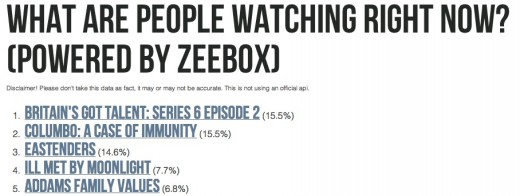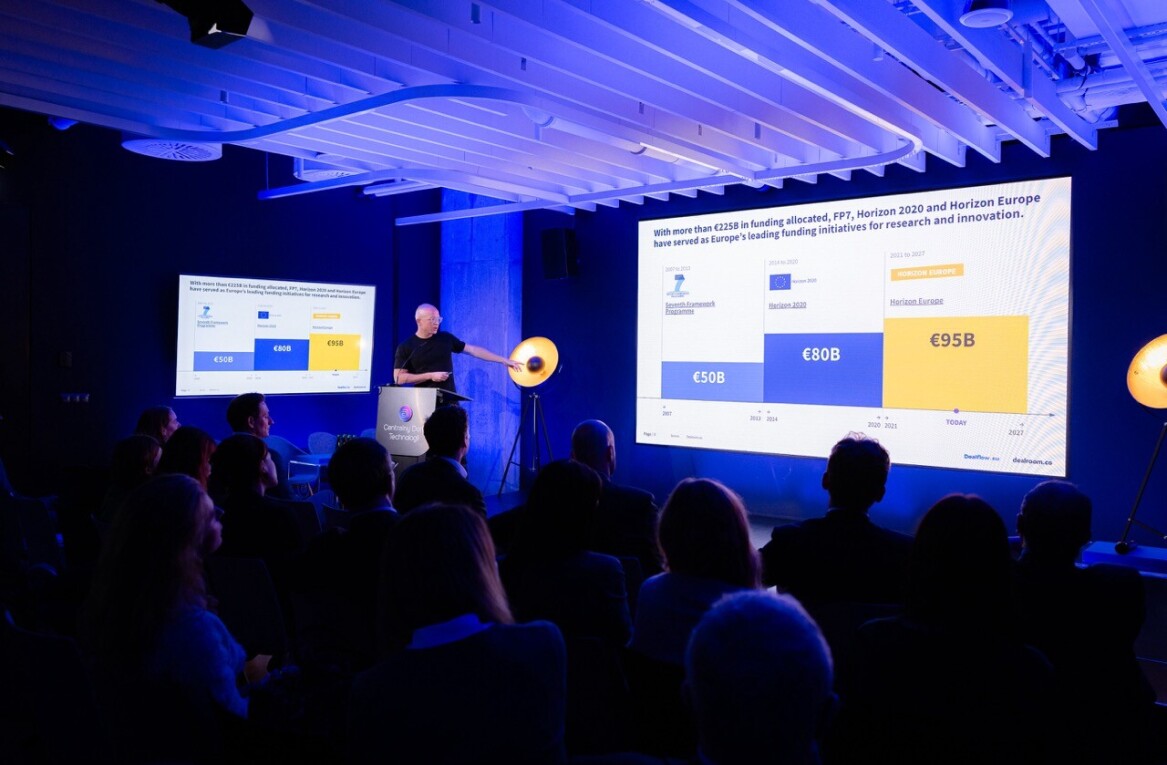
It’s always a joy to report on hack days. No matter the theme, the combination of a strict time limit, creativity and coding skills always leads to something interesting. In the case of MIPCube‘s TV Hack Day, this held true, although it highlighted how woefully sparse the resources available to independent developers wanting to innovate within television really are.
This was most apparent when it came to Nudge – a hack that aimed to send out reminders to users when their favorite shows were about to begin. The problem they faced was that TV listings data is a closely guarded commercial property with a fee for use. Even the tiny sample of data they could find for free was of very poor quality.
The hackers found themselves having to mock-up proof-of-concept demos rather than building working prototypes in some cases – not unheard of at other hack days, but with a lack of data and APIs to work with, here it was a necessity.
This led hack day stalwart Syd Lawrence to rant to the assembled industry figures that “The data coming out of broadcasters is shit. There is no data from your industry out there that we can actually play around with. I honestly think you should start to change that.”
It feels like the TV industry is roughly where the music industry was in 2005 in terms of data and its approach to the Internet – aware it needs to change, and making baby steps, but nowhere near the demand from the public and developers alike. By comparison to TV’s lack of open data, there’s a wealth of real-time data about the music playing on many radio stations around the world, which has been used for purposes as diverse as artist analytics and music discovery for consumers.
So, what did the ten participants manage to come up with in these challenging circumstances? Here are the five that caught our imaginations.
Zeebox Trending
Much-discussed UK social TV app Zeebox (read and listen to our interview here) doesn’t offer an API for data generated by its users, but Syd Lawrence managed to hack his way into accessing data about current check-ins to shows on the service. Zeebox Trending shows percentages rather than absolute figures for each show, and it’s unclear exactly how accurate the data Lawrence was able to access is, but it’s an interesting look at how TV show ratings could go real-time in the future. They could potentially allow broadcasters and viewers alike to see exactly what is the most popular channel at any given time.
Def TV
How could TV become more engaging for deaf people? Def TV, by John Lyons and Lawrence Job, offers one idea. Using the closed captions carried with broadcast TV to allow subtitles to be displayed, it identifies dramatic sound effects such as ‘Bang’ or ‘Crash’ and vibrates the viewer’s phone in sync. This offers deaf viewers something a little more than just reading dialogue and watching the action.
Lazy Shoppr
Want to make that delicious-looking meal on the cookery show you’re watching? Lazy Shoppr by Dave Williamson will automatically pick up the ingredients from the show and send them to a second-screen device, such as a tablet, in the form of a shopping list. From there, the required items can be purchased via online grocery stores.
Rcmmndr 2.0 Beta
Deliberately silly name aside, Rcmmndr 2.0 Beta is a very simple recommendation engine for films, from Syd Lawrence. Type in the name of a film and it will bring back similar movies, linking to each title’s Rotten Tomatoes page.
Grab Magic
Of course, we can’t ignore the winner of TV Hack Day. The only project not based around data, Grab Magic by Aral Balkan took a fresh look at interacting with TV content. Using Kinect, it allows you to ‘grab’ a screenshot of the TV show you’re watching with your hand and place it onto your iPhone screen for sharing with others.
The simple, gesture-based approach shows how gesture control could not only help kill the remote control in time, but allow for completely new forms of interaction.
You can read about all of the TV Hack Day projects on the Rewired State website.
Follow all of our MIPCube coverage via our dedicated channel.
Get the TNW newsletter
Get the most important tech news in your inbox each week.







